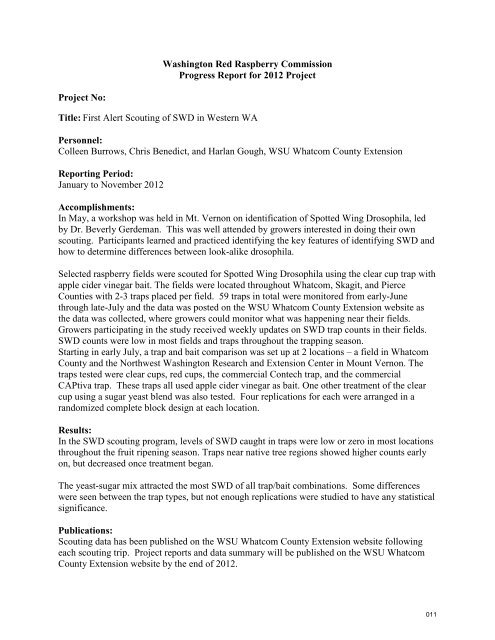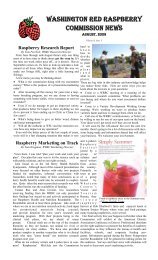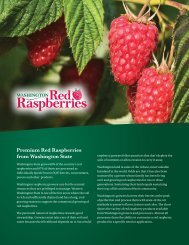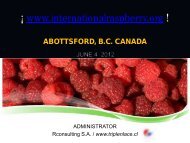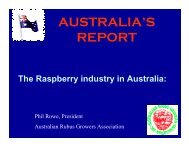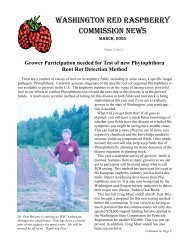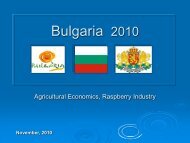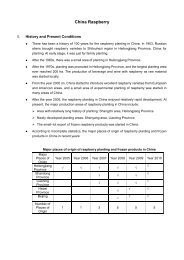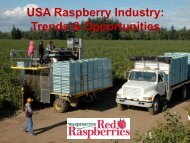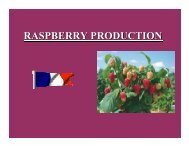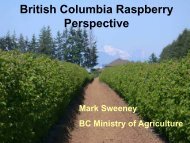2012 - Washington Red Raspberry Commission
2012 - Washington Red Raspberry Commission
2012 - Washington Red Raspberry Commission
Create successful ePaper yourself
Turn your PDF publications into a flip-book with our unique Google optimized e-Paper software.
<strong>Washington</strong> <strong>Red</strong> <strong>Raspberry</strong> <strong>Commission</strong><br />
Progress Report for <strong>2012</strong> Project<br />
Project No:<br />
Title: First Alert Scouting of SWD in Western WA<br />
Personnel:<br />
Colleen Burrows, Chris Benedict, and Harlan Gough, WSU Whatcom County Extension<br />
Reporting Period:<br />
January to November <strong>2012</strong><br />
Accomplishments:<br />
In May, a workshop was held in Mt. Vernon on identification of Spotted Wing Drosophila, led<br />
by Dr. Beverly Gerdeman. This was well attended by growers interested in doing their own<br />
scouting. Participants learned and practiced identifying the key features of identifying SWD and<br />
how to determine differences between look-alike drosophila.<br />
Selected raspberry fields were scouted for Spotted Wing Drosophila using the clear cup trap with<br />
apple cider vinegar bait. The fields were located throughout Whatcom, Skagit, and Pierce<br />
Counties with 2-3 traps placed per field. 59 traps in total were monitored from early-June<br />
through late-July and the data was posted on the WSU Whatcom County Extension website as<br />
the data was collected, where growers could monitor what was happening near their fields.<br />
Growers participating in the study received weekly updates on SWD trap counts in their fields.<br />
SWD counts were low in most fields and traps throughout the trapping season.<br />
Starting in early July, a trap and bait comparison was set up at 2 locations – a field in Whatcom<br />
County and the Northwest <strong>Washington</strong> Research and Extension Center in Mount Vernon. The<br />
traps tested were clear cups, red cups, the commercial Contech trap, and the commercial<br />
CAPtiva trap. These traps all used apple cider vinegar as bait. One other treatment of the clear<br />
cup using a sugar yeast blend was also tested. Four replications for each were arranged in a<br />
randomized complete block design at each location.<br />
Results:<br />
In the SWD scouting program, levels of SWD caught in traps were low or zero in most locations<br />
throughout the fruit ripening season. Traps near native tree regions showed higher counts early<br />
on, but decreased once treatment began.<br />
The yeast-sugar mix attracted the most SWD of all trap/bait combinations. Some differences<br />
were seen between the trap types, but not enough replications were studied to have any statistical<br />
significance.<br />
Publications:<br />
Scouting data has been published on the WSU Whatcom County Extension website following<br />
each scouting trip. Project reports and data summary will be published on the WSU Whatcom<br />
County Extension website by the end of <strong>2012</strong>.<br />
011


